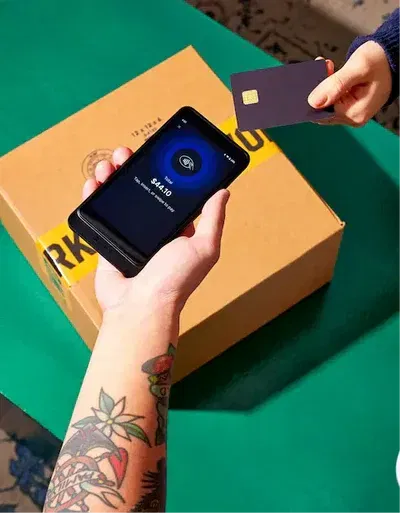Designer Portfolio Design Tips to Make a Lasting Impression
The Ultimate Guide to Designer Portfolio Design: Build a Portfolio That Wins Clients
Imagine showing up to a dream client meeting or applying for a top design role—and instead of scrambling to explain your skills, you simply send a link. That link, your designer portfolio design, becomes your most powerful spokesperson.
A great portfolio isn’t just a digital scrapbook. It’s a carefully crafted story of who you are as a creative, how you solve problems, and why someone should trust you with their next project. Whether you’re building a graphic design portfolio, a graphic artist portfolio, or seeking the most clever web portfolios, this guide will walk you through everything you need to know to stand out in the crowded design world.
| Category | Details |
|---|---|
| Definition | Designer portfolio design is the structured presentation of your creative work to showcase your skills, aesthetic, and professional capabilities. |
| Primary Purpose | To demonstrate your design thinking, process, and results visually for clients, employers, and collaborators. |
| Essential Elements | Name and contact info, personal bio, selected work samples, case studies, consistent layout, and visual branding. |
| Types of Portfolios | Web Portfolio (custom sites), PDF Portfolio (email/applications), Platform Portfolio (Behance, Dribbble, Adobe Portfolio). |
| Must-Have Pages | Homepage, About, Projects/Case Studies, Contact Page, Optional Resume/CV. |
| Project Selection Tips | Choose 4–6 high-quality projects including branding, UI/UX, social media, and print. Include at least one quick-turnaround project. |
| Best Portfolio Website Examples | Jessica Walsh (andwalsh.com), Daniel Spatzek (spatzek.com), Mike Kus (mikekus.com), Adham Dannaway, Emma Gannon. |
| Common Mistakes | Too many samples, low-res images, no mobile responsiveness, vague descriptions, hard-to-find contact info. |
| Quick Improvement Tips | Use whitespace, consistent fonts, SEO-friendly titles, optimized images, and add testimonials. |
| Storytelling Structure | Describe the client problem, your design process, tools used, and final outcomes for each project. |
| Great Clever Web Portfolios | Tobias van Schneider, Bruno Simon (3D experience), Julie Bonnemoy, Tim Roussilhe—each offers a unique interactive or visual approach. |
| No-Code Tools for Web Portfolio | Wix, Squarespace, Webflow, Adobe Portfolio—ideal for non-developers to build a design-forward site. |
| SEO Optimization Tips | Use keyword-rich headings, name images properly, add alt text, create a blog section to boost organic traffic. |
| Best Use Cases | Freelance work, agency roles, internship applications, collaborative gigs, personal branding. |
| Goal of Portfolio Design | To leave a memorable impression that communicates not only what you can do but how you think as a designer. |
What Is Designer Portfolio Design?
At its core, designer portfolio design is the strategic presentation of your best creative work in a format that is visually engaging, informative, and aligned with your personal brand. It can live on a dedicated website, a PDF, or a curated platform like Behance or Dribbble.
Key Elements:
- Your name and contact info
- A personal or professional bio
- High-quality graphic design examples or case studies
- Visual consistency across pages
- A clean, functional layout that reflects your aesthetic
Insert image suggestion: Sample graphic design portfolio homepage layout with project thumbnails.
Why Your Graphic Design Portfolio Matters More Than Your Resume
Hiring managers, clients, and creative directors want to see your skills, not just read about them. A polished portfolio website graphic design gives them a firsthand look into your:
- Visual thinking process
- Problem-solving approach
- Software and tool proficiency
- Personal design style
Having a solid portfolio increases your chances of landing freelance gigs, full-time roles, and collaborations. And if your portfolio includes great graphic design portfolios or cool graphic design portfolios for inspiration, you’re off to a strong start.
Types of Designer Portfolios (And Which One’s Right for You)
| Type | Ideal For | Format |
|---|---|---|
| Web Portfolio | Web designers, freelancers | Custom domain or platforms like Webflow, Squarespace |
| PDF Portfolio | Job applications, email submissions | Downloadable, printable |
| Platform Portfolio | Showcasing quick projects | Behance, Dribbble, Adobe Portfolio |
Each serves a different audience. The key is to tailor your designer portfolio design to fit the viewer’s expectations.
Must-Have Sections in a Graphic Design Portfolio
- Homepage: A simple, bold statement with a preview of your best work.
- About Page: Your background, design philosophy, and a photo.
- Project Pages: Individual case studies with context, challenges, process, and results.
- Contact Page: A clear way to reach you—contact form, email, or social links.
- Resume/CV (Optional): A downloadable version or summary on-page.
How to Choose Projects for Your Portfolio
Quality always trumps quantity. Include 4–6 well-rounded graphic design portfolio examples that highlight different skills:
- Branding and logo design
- Web design or landing pages
- Social media graphics
- Print design (e.g., posters, brochures, publication design portfolio pieces)
- UI/UX or app design
Pro Tip: Include at least one quick graphic design portfolio project that demonstrates your ability to work under constraints.
Best Portfolio Website Examples to Learn From
Looking for portfolio web pages examples? These sites nail both function and aesthetic:
| Designer | Website | Highlights |
|---|---|---|
| Jessica Walsh | &Walsh.com | Bold, experimental design direction |
| Daniel Spatzek | spatzek.com | Interactive transitions and case studies |
| Mike Kus | mikekus.com | Photography and design fusion |
| Adham Dannaway | adhamdannaway.com | Split resume/portfolio format |
| Emma Gannon | emmagannon.co.uk | Minimal and editorial-focused design |
Insert image suggestion: Screenshot collage of homepage thumbnails from top portfolio sites.
Common Mistakes in Portfolio Website Design
Avoid these red flags when creating your graphic portfolio site:
- Using low-res images or incomplete projects
- Overloading with too many samples
- Writing vague or generic project descriptions
- Making your contact info hard to find
- Neglecting mobile responsiveness
Your portfolio website design should work on all devices, load quickly, and make the user’s journey intuitive.
Quick Tips for a Better Designer Portfolio Design
- Use whitespace generously—it adds polish.
- Stick to a 2–3 color scheme.
- Include mockups to show real-world context.
- Add testimonials if you’ve worked with clients.
- Optimize all images for fast loading.
- Use SEO-friendly titles like “Graphic Design Portfolio Pages” or “Best Graphic Design Portfolios 2025.”
Showcasing Your Work: Tell a Story, Don’t Just Show a Picture
Instead of just uploading a poster or ad, walk your viewers through:
- The client brief or problem statement
- Your brainstorming and research process
- Tools you used (Figma, Adobe XD, Illustrator)
- The final product and how it performed
This turns simple designs into thoughtful case studies that demonstrate strategic thinking.
Cool and Clever Web Portfolios You Should Explore
Here are a few more clever web portfolios and great graphic design portfolio websites worth studying:
- Tobias van Schneider (vanschneider.com)
- Bruno Simon (bruno-simon.com – 3D portfolio experience)
- Julie Bonnemoy (juliebonnemoy.com – illustration-heavy interface)
- Tim Roussilhe (tim.roussilhe.com – minimalist with code experiments)
These sites show how different design disciplines can shine in digital spaces.
How to Create a Web Design Portfolio Without Knowing Code
No code? No problem. Use these tools:
- Wix: Simple drag-and-drop + mobile responsiveness
- Squarespace: Sleek templates with portfolio focus
- Webflow: More flexible; great for advanced animations
- Adobe Portfolio: Integrates with Behance and Creative Cloud
You can launch a basic portfolio website graphic design layout in a weekend without writing a line of code.
SEO Tips to Make Your Portfolio Rank on Google
- Include keywords like graphic artist portfolio sites and best graphic design portfolio sites in meta descriptions
- Name your image files descriptively (e.g., “2025-web-design-portfolio-example.jpg”)
- Use alt text for images
- Create a blog page with posts on your design process, tools, or tutorials
This will help your graphic design web portfolio stand out to search engines and real people.
1. What is designer portfolio design and why does it matter in 2025?
Designer portfolio design refers to the process of curating and presenting your best creative work—through a website, digital PDF, or platform profile—in a strategic, visually engaging, and story-driven way. It’s more than a gallery of images. It’s a reflection of your thinking, skills, and personality as a designer.
In 2025, where visual branding and digital presence are essential, your portfolio is your first impression. Clients and hiring managers judge your capability, creativity, and professionalism based on how you showcase your work. The right graphic design portfolio can lead to new projects, better jobs, and long-term client relationships.
2. What are the key elements every graphic design portfolio should include?
Every effective graphic design portfolio—whether digital or print—should include:
-
A homepage or landing section with your name and niche
-
An “About Me” section with a short bio, tools, and skillset
-
A selection of 4–6 curated projects, each with case study details
-
Clear navigation and a minimalist, user-friendly layout
-
Contact information or a contact form
-
Optional resume or download section
-
Optional testimonials or client quotes
Whether you’re designing a web portfolio example or a graphic artist portfolio, these elements establish credibility and usability.
3. How do I choose the right projects to showcase in my portfolio?
When building your portfolio website design, prioritize quality over quantity. Choose projects that reflect:
-
A variety of skills (branding, UI/UX, print, web, etc.)
-
Strong visuals and real results
-
A mix of personal and client-based work
-
Your unique design aesthetic
It’s also important to include one or two quick graphic design portfolio projects that demonstrate your ability to work under pressure or tight deadlines. These show adaptability—a key trait clients value.
4. What are some of the best graphic design portfolio sites to use for inspiration?
Here are several best graphic design portfolio sites that offer layout inspiration and creative direction:
-
Jessica Walsh – andwalsh.com
-
Mike Kus – mikekus.com
-
Daniel Spatzek – spatzek.com
-
Tobias van Schneider – vanschneider.com
-
Bruno Simon – bruno-simon.com
These great graphic design portfolios vary in style—some bold and experimental, others minimalist and modern. Explore their graphic portfolio site layouts to identify what matches your own voice.
5. What is the difference between a graphic design portfolio and a graphic artist portfolio?
A graphic design portfolio typically focuses on visual communication, branding, typography, and digital assets, often for clients or business use.
In contrast, a graphic artist portfolio leans more toward illustration, personal expression, and conceptual art. You’ll often find more abstract or expressive projects in graphic artist portfolio sites, whereas portfolio website graphic design sites might be more structured and client-driven.
Both are valid—but the format and tone should match your niche and audience.
6. What makes a graphic design portfolio stand out to clients and employers?
To stand out, your graphic design portfolio needs to be:
-
Visually cohesive: Use consistent fonts, colors, and spacing
-
Strategically organized: Group work logically—by medium or industry
-
Insightful: Share the process behind each project, not just the outcome
-
Responsive: Make sure your portfolio web pages examples work across devices
-
Polished: High-resolution images, clean layouts, no broken links
Bonus tip: Include a “Why I designed it this way” paragraph to give viewers insight into your thinking.
7. What platform is best for building a portfolio website without code?
Several platforms support portfolio website design with no coding required:
-
Wix – Beginner-friendly with modern portfolio templates
-
Squarespace – Sleek design options and fast deployment
-
Adobe Portfolio – Free with Creative Cloud, integrates with Behance
-
Webflow – For designers who want more animation and customization
-
Notion – Minimalist layout great for quick publishing
These are excellent for showcasing portfolio graphic content without the need to hire a developer.
8. How do I write strong case studies for my portfolio projects?
A well-written case study sets great graphic design portfolio examples apart. Use this structure:
-
Project Overview – Client name, problem, and goals
-
Your Role – What you did and who you worked with
-
The Process – Sketches, tools, iterations, feedback loops
-
The Solution – Final deliverables with visuals
-
Results – Metrics, testimonials, or client success
This storytelling approach turns flat visuals into compelling design narratives.
9. How many projects should I include in my portfolio?
4–6 strong, diverse pieces is ideal. Focus on quality and relevance rather than overwhelming visitors with 20+ designs.
If you’re building a sample graphic design portfolio, include:
-
One brand identity
-
One web design or UI/UX project
-
One print or publication design portfolio entry
-
One quick graphic design portfolio project
-
One passion or personal project
More than this can be overwhelming. Less can appear inexperienced unless each project is deeply detailed.
10. What are clever web portfolios and how can I create one?
Clever web portfolios use smart UX/UI design and storytelling to engage visitors. Examples include:
-
Interactive scrolling or hover effects
-
Portfolio/resume split-screen like Adham Dannaway
-
3D environments like Bruno Simon’s driving game site
-
Illustration-heavy pages like Julie Bonnemoy’s work
You can create your own clever portfolio using Webflow, Framer, or advanced WordPress themes—just make sure the experience doesn’t overshadow your actual work.
11. How can I optimize my graphic design portfolio for SEO?
To help your graphic design web portfolio rank in search results:
-
Use keywords in page titles and H1 tags (e.g., “Freelance Graphic Design Portfolio – NYC”)
-
Add descriptive alt text to every image
-
Name image files clearly (e.g., “logo-design-retail-2025.jpg”)
-
Create a blog page sharing design tutorials or your creative process
-
Include internal links between projects and services
Optimizing your graphic artist portfolio helps you get discovered by clients looking for your expertise.
12. Should I include student or personal work in my portfolio?
Yes—if it’s relevant and well-presented. Many sample portfolio websites include passion projects or hypothetical brand redesigns. These can be valuable, especially if you:
-
Treated it like a real-world brief
-
Used real-world design constraints
-
Documented your thinking and process
Make sure your portfolio design communicates the value of the piece clearly—even if it wasn’t paid work.
13. What makes a good “About Me” page on a portfolio website?
The “About Me” page is your chance to humanize your graphic design portfolio. Keep it short but compelling:
-
Mention your name, role, and niche (e.g., “I’m a publication designer in Chicago”)
-
Share your design philosophy or process briefly
-
Add a professional headshot
-
Mention tools and platforms you use (Figma, Photoshop, InDesign, etc.)
-
Include a CTA (“Let’s work together!” with a contact link)
Avoid clichés like “I’ve been creative since I was 5” unless you can tie it to a strong design narrative.
14. How can I make my portfolio more interactive or engaging?
To add engagement to your portfolio website graphic design:
-
Use scroll-triggered animations or transitions
-
Add video walkthroughs or time-lapse screen recordings
-
Let visitors filter projects by type (branding, UI, packaging)
-
Include “Before/After” sliders for redesigns
-
Add client logos and click-to-view testimonials
Just remember: functionality should enhance—not distract from—the portfolio content.
15. How often should I update my designer portfolio?
Ideally, update your graphic portfolio site every 3–6 months or whenever:
-
You complete a major project
-
Your visual style evolves
-
You switch niches or target audience
-
You start applying to new jobs or pitching to clients
A stale portfolio sends the wrong message. An up-to-date one communicates confidence, professionalism, and growth.
Conclusion: Your Portfolio Should Work as Hard as You Do
The best designer portfolio designs aren’t just pretty—they’re strategic, thoughtful, and uniquely you. Whether you’re a student building your first sample portfolio website or a pro refining your publication design portfolio, your portfolio should reflect your creative DNA and leave viewers wanting more.
So, start small, iterate often, and focus on clarity and cohesion. You don’t need the “best” design—you just need one that shows the best of you.
What’s one thing your portfolio says about you? Share your thoughts or portfolio link in the comments—I’d love to take a look!
Best Place to Buy Backlinks – Get High-Quality Links for SEO Success




